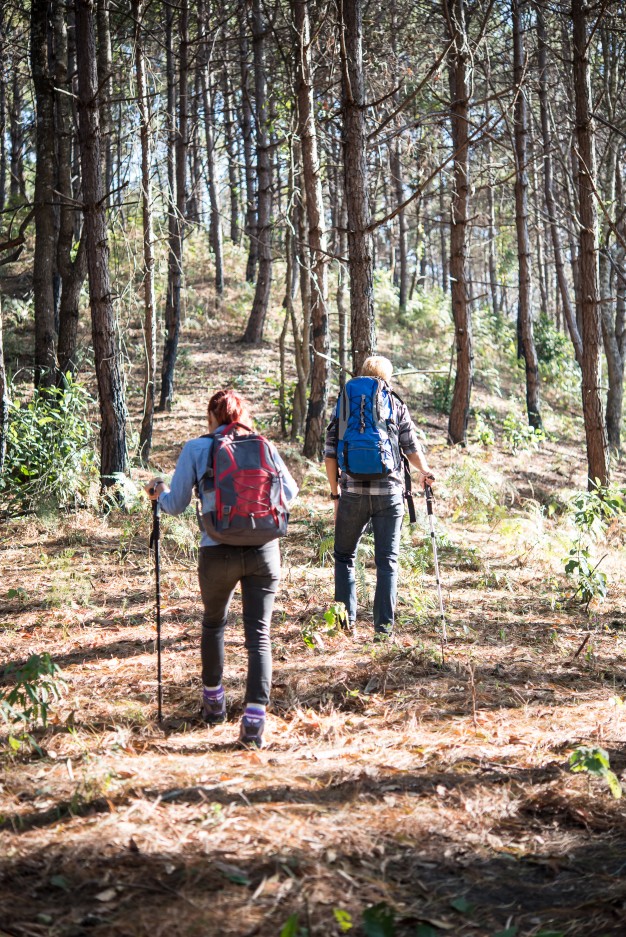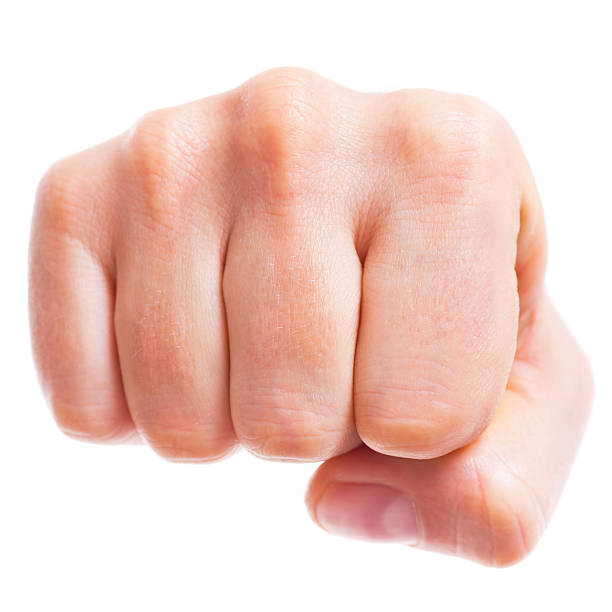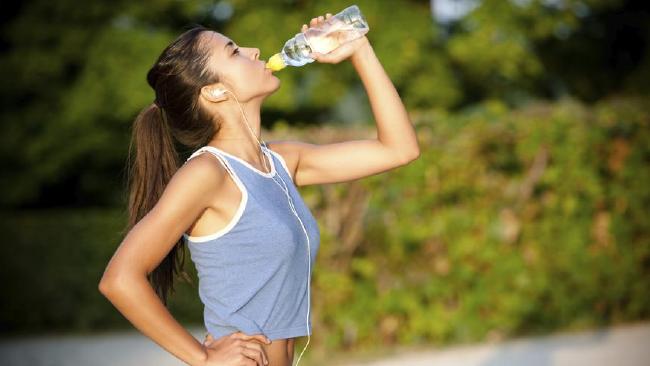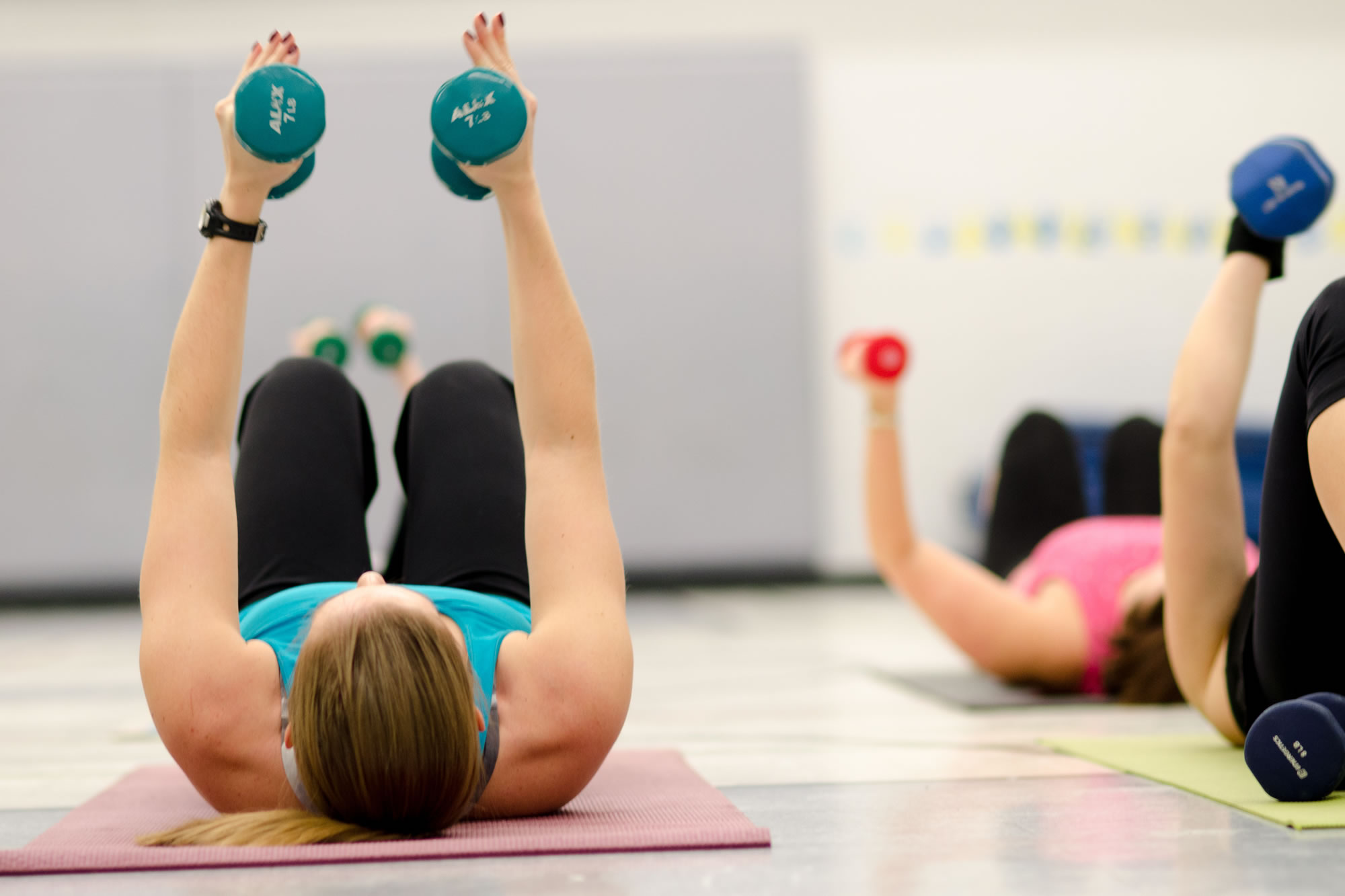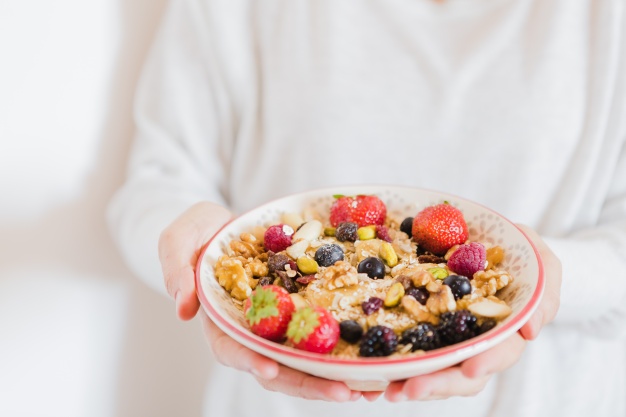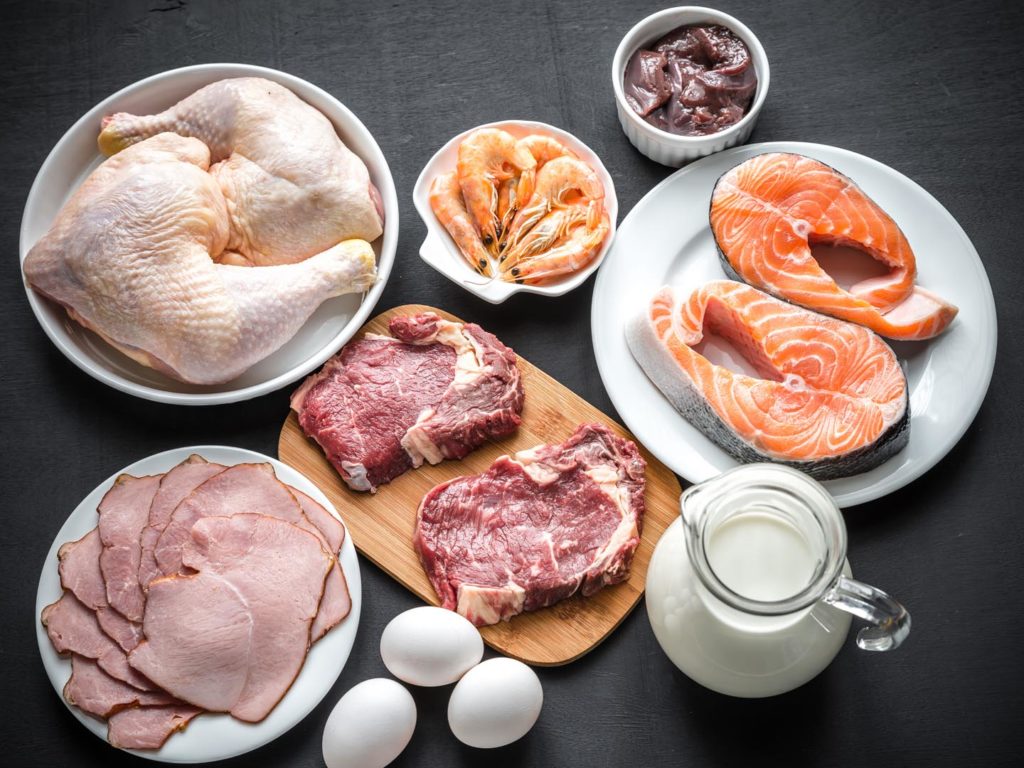Dear Pooja,
I am 29-year-old unmarried woman and planning to go for a trek to Manali after two months. Since trekking requires one to have good stamina, I would like to know the right diet that will help me increase my stamina levels. Currently, I feel tired when I run or brisk walk even for a short while. Please let me know which foods I should eat. Thank you.
Lets thank the Manali trip that triggered you to wake up and address the signs your body is giving you. In this roll-a-coaster life where we are so tuned to listening to every beep of our mobile distinguishing the sounds easily between an email, sms or or a what’s app – but the signs our body gives us so easily goes unnoticed. Weakness, breathlessness, poor stamina amongst others are all signals of under-nutrition, vitamins, minerals and/or amino acid deficiencies. Firstly I’d suggest you check your hemoglobin and serum B12 levels and have these deficiencies corrected as low levels of these are directly related to the signs you have mentioned above. Gaining long lasting stamina may take a little more love care and attention in your day-to-day diet and exercise regime over a long-term basis but you should see some definitive improvement within two months as well.
A visit to a nutritionist can teach you what your daily requirement for proteins and carbohydrates is and how to divide this effectively into several small meals to fuel your systems adequately. Keep the focus on good quality and quantity of proteins daily along with a good tilt toward fresh fruits and vegetables. Avoiding excess sugar and fat always goes a long way in terms of a fit and healthy mind and body. As I always suggest eating small meals every two hours not only improves metabolism and aids weight loss, it also makes sure that the body gets a steady supply to energy without any peaks or troughs in the blood sugar levels – this is one main essential for sustain Duracell stamina levels. Sorry I was unable to give you exact foods and quantities cause that requires me to know many details about you to help you in complete totality. All the best, hope you enjoy your trekking trip with great vigour and strength.
Remember those `united we stand, di vided we fall’ ads that used to play on DD? Those cute little short films, about the importance of unity? The funda was simple: five fingers by themselves will not be effective unless you close your fingers and make a fist. The same principle works for your body as far as a balanced meal is concerned.
5 FINGERS OF WEIGHTLOSS
By themselves, the Five Fingers of Weight Loss -proteins, carbohydrates, fats, vitamins and minerals -have their own functions. But the various nutrients must act in unison for effective action. In other words, for long-lasting weight loss or weight management, you need to eat all five nutrients. Every day. There is no other way.
The Five Fingers of Weight Loss can further be broken down into three macronutrients (proteins, carbs, fats) and two micronutrients (vitamins, minerals); the reason it is divided this way is because it rep resents the relative importance on your plate.Don’t overload your vitamins at the cost of carbs, or cut fats and go crazy about protein.Too much emphasis as well as the absence of any one nutrient will compromise your health and result in short-term gains sending you right back where you started. Any meal plan that is skewed towards any food group, including proteins or raw veggies,w i l l give rise to a host of medical problems, and will result in a diminishing effect on your system. If you think your diet is unbalanced, it is. You cannot be short-sighted about it as the ills will eventually catch up with you.
On your plate lies the answer to many issues plaguing your life from the mental to the physical. Your plate holds not just fuel for your system, but carries all the tools you need to do more with your body and your life. Because food is not just fuel. Food is power.
Collectively, these five nutrients are your defence against disease, obesity, heart at tacks and almost anything else you need to ward off. Diabetes? Make a fist. Heart disease? Hey, you’ve got your fist. Obesi ty? Talk to the fist, baby! So many dis eases are lifestyle-related and can be eradicated -not just improved -by the rule of the fist.
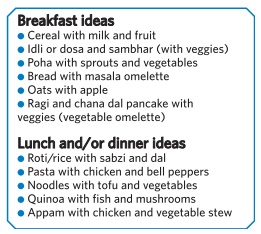
With all the parties and social obligations, your days will soon get shorter and nights, longer. In this season of bling, excesses and over stimulation, what’s the best possible way to get that healthy, cared-for glow? A small early Diwali present in the form of some invaluable, tried-and-tested health advice…
FOOD
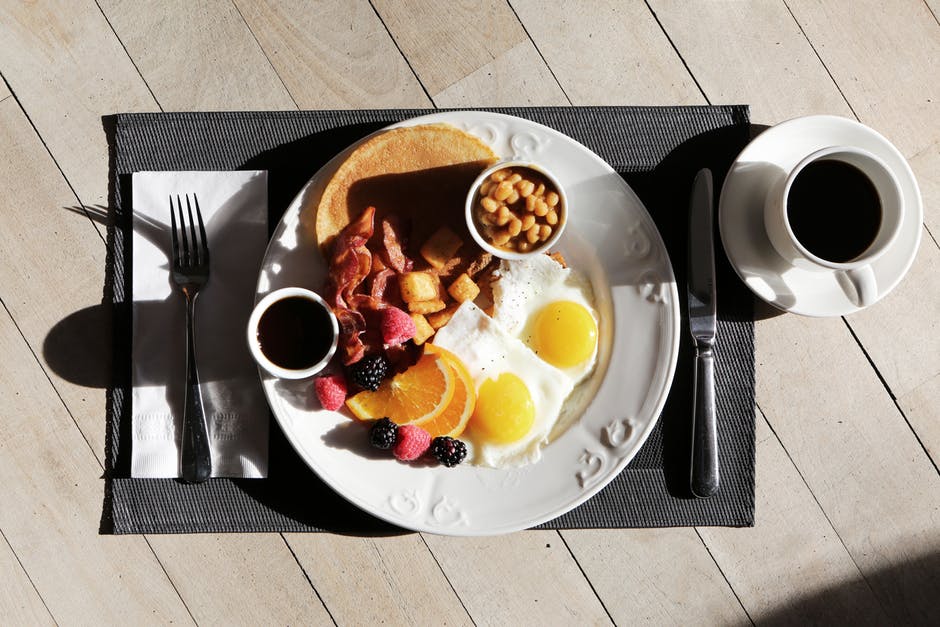
If you are not used to a healthy eating pattern, it’s hard to start strict regimens during a season littered with temptation. Having said that, you can always be one step ahead of your metabolism by breaking up the four meals a day -break fast, lunch, dinner, tea-time snack -into eight smaller meals, spread through the day. This way, you ensure that you eat every two hours. Keep in mind that just like walking, running or jumping, digestion also burns calories. Eating smaller meals pushes your body to burn more calories from the same food, giving your body a workout on the inside. Eating every two hours may also help you lose a little weight and keep your cravings under control. Also, keep your antioxidant quotient high, and focus on drinking vegetable juices, not fruit juices (high in sugar).
And, whatever you do, don’t starve your body into submission in order to knock a few kilos off. Just be smart about what and how you eat. Don’t be afraid of food. Always remember that food is your friend, not enemy.
EXERCISE
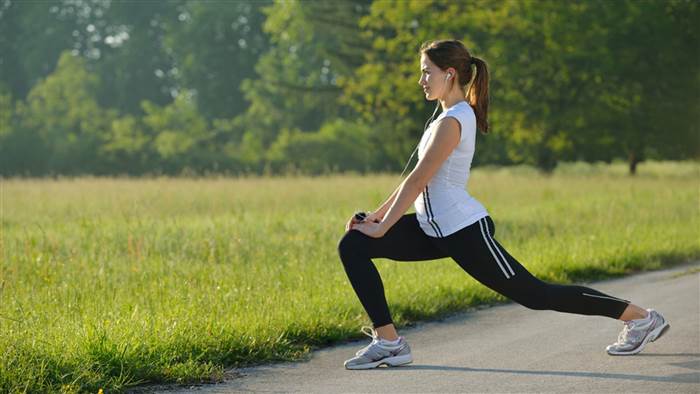
It’s never too late to start a daily 60-minute cardio session as a run-up to the season. Exercise helps to pump up your metabolic rate by almost 20-30 per cent sometimes, enabling you to digest better and burn the little and bigger treats that you allow yourself this season. Blood also rushes to your skin when you exercise, providing it with that much-needed glow. Not only do you lose weight, you also look fresh and young. You can never go wrong with exercise, no matter when you start.
SLEEP
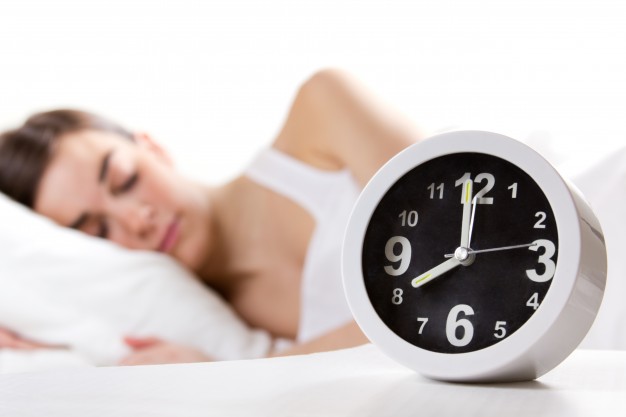
‘Tis the season to be drowsy. Diwali can bring about heavy sleep deprivation because of late nights and compulsive socialising. If you are already cheating on your sleep even before you are well into the season, catch up now to shore up for the inevitable sleep debt that will pile up. Sleep is vital for your body though its importance is quite undervalued.Your body heals and repairs itself when you sleep, and this includes your skin. There is also a strong and undeniable link between sleep and obesity. Do note that when your body reaches 24 hours of sleep debt, it tends to crash, causing conditions like flu or viral.
WATER
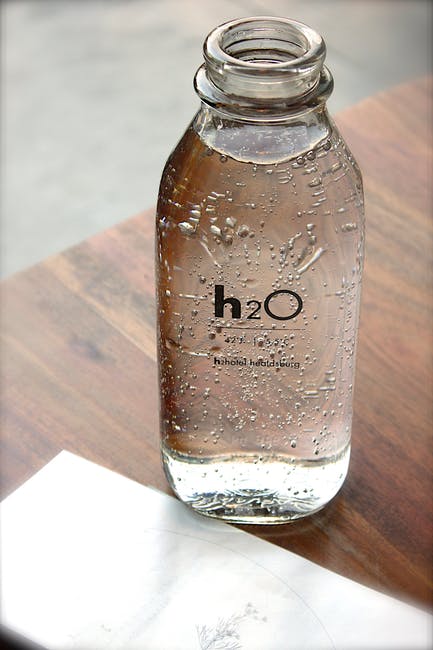
Make-up cannot hide dull, dehydrated skin. For a natural glow, don’t just drink the pink stuff in the daiquiri glasses, glug as much water as you can a minimum of two litres a day. There’s also the trend of special `detox water’ doing the rounds, claiming you can lose weight just by drinking it. My take on it is that while you may or may not lose weight on detox water, you’ll definitely be well hydrated. Since there is a link between hydration and weight loss, you may just lose weight anyway.
Your brain’s thirst and hunger centers are so close together that sometimes you eat because you are thirsty. Adequate hydration means that you won’t confuse thirst with hunger which leads to more thoughtful eating.Take care of yourself this Diwali for a great year ahead. On your marks. Get set and glow.
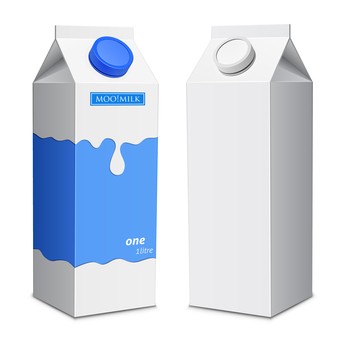
Did you know that boiling and re-boiling milk on a high flame for an extended period of time affects its nutritional content, particularly the proteins and B group (B1, B2, B12) of vitamins? These vitamins evaporate as heat increases. A lot of people are unaware of the fact that consumption of fresh milk is always advisable, and just one boil is enough to retain the nutrients of milk. A recent survey conducted by Research Pacific India reveals that 60 per cent mothers are unaware about the nutrition loss in milk due to boiling. Even after the first boil, they continue boiling it for about seven minutes. If you’re buying milk from the milkman, the ideal way to consume it is to heat it at 100 degrees Celsius for less than 8 to 10 minutes.
Another great solution is to opt for tetra paks. With rampant adulteration and microbial contamination of milk causing varied health risks, the use of aseptic packaging is a boon for the white revolution. Using either UHT (ultra high temperatures) or HTST (high temperature short time), the milk is heated on a prescribed high temperature for only a few seconds and then cooled down and immediate ly aseptically packed in tetra paks. This not only prevents entry of any microbes but also helps retain the nutritional strength of the packaged product. Once you open the tetra pak, refrigerate it and consume the milk within two to five days.Apart from being environmentally friendly, aseptic packaging increases the shelf life of the product, eases its transportation and also prevents adulteration of any sort.There are many myths surrounding tetra paks. We bust a few elementary ones:
MYTH #1
Tetra pak milk and dairy products have added preservatives: The use of high heat (75 degrees Celsius for 15-20 sec or 138 degrees Celsius for 23 seconds) helps remove all micro-organisms from the milk including bacterial spores. This process, followed by packaging, is conducted in a sterile con dition. The packing technique further helps prevent spoilage of the milk. All this together aids preservation and hence no additional preservatives are added.
MYTH #2
Tetra pak products are not nutritious: Heating on a high temperature for a very short time prevents the loss of most nutrients something that occurs in the conventional method of boiling. Many homemakers repeatedly boil milk for long durations to ensure that all microbes are de stroyed but in doing so, there is in turn a loss of all wa ter-soluble vitamins. This is the reason why aseptically packaged milk and milk products have better nutritive val ue than other forms of bottled milk.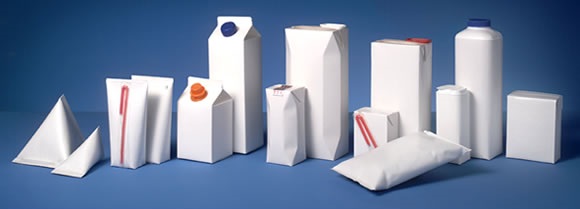
MYTH #3
Tetra pak milk needs boiling: Boiling of tetra pak milk is an unnecessary step that causes loss of many B complex vi tamins plus leads to wastage of time and resources. The aseptic packaging involves transferring the UHT treated milk into pre-sterilised packages in a sterile environment, thus there is no risk of contamination and therefore no need to boil the milk before use. You can have it directly or warm it slightly to have it as a hot beverage.
MYTH #4
Tetra pak is not suitable for children: With hygienic packaging of unparalleled quality, tetra pak milk is extremely safe for a child’s growth and development. Easy usability, convenient portability, and better nutrient strength all these factors make it a preferred choice for kids.
The Food Safety Standards Authority of India (FSSAI) has confirmed that 70 per cent of the milk available in the country is adulterated with detergent, glucose and skim milk powder. Hence, though we consume milk for its protein and calcium which may be retained post boiling too, tetra pak is an ideal option for packaged milk as it eliminates the chances of adulteration due to its absolutely hygienic process ing and packaging methods.

It’s 3 am. Sharp pains have suddenly awakened you. Last night’s memories of a fab dinner with friends now clash uncomfortably with the real time sensations of a full-fledged nuclear war in your stomach.
Indigestion is more common than you think. Symptoms include acidity, nausea, bloating, belching, burning sensations in the stomach or the upper abdomen, abdominal pain, gas and even vomiting.
Sometimes confused with heartburn, indigestion could be attributed to a number of causes from medical conditions (ulcers, irritable bowel syndrome, stomach infections and more) to medication (aspirin, painkillers, antibiotics, oral contraceptives). Lifestyle habits (eating too fast, eating in huge quantities, eating food that’s high in fat or eating under stress) are also culprits. Additionally, if you consume too much alcohol, smoke too much or are stressed or fatigued, you are more prone to indigestion than others. Here’s what you should -and shouldn’t -eat to help you ease the digestive process.
Stomach this Fibre: Foods high in fibre are wonderful for your digestive system. But there’s no need to scarf down unappetising or strange foods. You need to up your intake of wholewheat bread, brown rice, oats and beans, fruits and vegetables.
Water: Water is a key lubricant for your digestive system. It facilitates the easy movement of waste, softening your stools in the process, helping prevent constipation. It also helps your body break down the food you have eaten.
Drink 8-10 glasses a day.
Drinks: Caffeine-rich drinks such as colas, teas, coffees and other fizzy drinks worsen indigestion as they increase the level of acidity in your body. Fizzy beverages also lead to bloating. For relief, ditch the above for herbal teas, milk or just plain water.
Probiotics: Probiotics are `good’ bacteria, which are natural ly found in the gut, and have been associated with host of health benefits, including aiding digestion.
Food companies have started producing probiotic milk, drinks, dahi and even ice-creams.
NOT THIS Spices: In India, it is as hard to let go of spicy foods as it is to limit your intake of tea and coffee. Spices have been known to trigger stomach ache and heartburn, so if you find yourself in pain or discomfort regularly, try and limit your consumption of heavy, spicy meals. And if you can avoid spices completely, nothing like it!
Fat: Your body finds it harder to digest fatty food items like burgers, French fries and samosas. And this is why they cause you a great deal of discomfort. The more you cut back on difficult-to-digest fried and greasy foods, the more your stomach will thank you for it. Bumping up your intake of skimmed milk and low-fat foods will spare you both the pain and the weight gain.
While this is a general list, it’s always best to keep track of the foods that work or don’t work for you. Try and keep a diary of the food you eat for a week or two to figure out what’s behind that episode of nausea or gas. You may even realise that you are lactose intolerant, and that dairy was the culprit after all.
And lastly, please do take time out for yourself to relax your mind, and ease your stress. Indigestion is aggravated by anxiety and it’s important to free your mind to free your body.
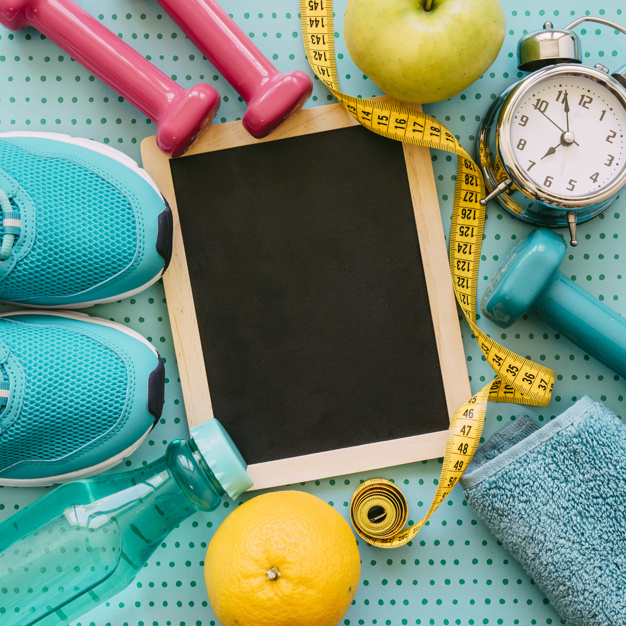 Traditionally, men’s fitness has always been associated with getting bigger and not smaller.From the days of Rocky Balboa and John McClane to Vin Diesel and John Statham, big beefy guys defeated the bad guys and got the girls. The notion of fitness with getting thinner -and not beefier -is a relatively newer phenomenon for men, who, like women, are putting on more weight because of a sedentary lifestyle.
Traditionally, men’s fitness has always been associated with getting bigger and not smaller.From the days of Rocky Balboa and John McClane to Vin Diesel and John Statham, big beefy guys defeated the bad guys and got the girls. The notion of fitness with getting thinner -and not beefier -is a relatively newer phenomenon for men, who, like women, are putting on more weight because of a sedentary lifestyle.
While it’s important to spend more time in the gym, getting off the couch may not be the only way to banish your inner, and outer potato. Paying attention to nutrition becomes crucial to losing weight and keeping it off. While the schools of thought on weight loss are as diverse as the people who graduate from them, I’ve broken them down into Hard and Smart. The difference is replacing the old idea that you need to kill yourself to achieve anything in life (Hard) with the belief that you can have your cake, and eat it too (Smart).
Hard: Eat less, weigh less Smart: Eat to lose
If you’ve been drastically cutting calories when you want to lose weight, here’s why you shouldn’t. Cutting too many calories puts you body into starvation mode. When your body is in this mode, it can’t metabolise, or burn fat (because fat burning occurs only when your body is adequately nour ished). If your body can’t burn fat, it starts to burn the next best thing: muscle. The more muscle you lose, the more your fat cells start to increase: the lost muscle is replaced by fat. And the more fat cells you have, the greater your body’s tendency to store more fat when you get back to eating `normally’. Fat burning is at its optimum when your body is adequately nourished with a balanced and healthy diet. So many of my clients have to eat more than they ever did (healthier stuff like fruits, veggies, egg whites), and that too at frequent intervals.
Hard: No snacking Smart: Eating every 2 hours
Eating between meals was said to be the culprit behind weight gain, with the implication that you needed to eat only during your main meals (breakfast, lunch and dinner) to lose weight. However, studies have disproved this belief.You need to get away from the age-old habit of packing your day’s nutrients into three-four meals, and instead, spread them out in the form of smaller, more frequent meals.
Digestion itself is a calorie burning activity just like walking, running or jumping. By eating smaller meals through the day, you allow your body to burn calories through the digestive process. Eating every two hours (not more or less), I find, is the best way to take advantage of this phenomenon.
Hard: Sweat more, eat more Smart: Sweat less, eat smart
So many of my clients come in with the idea that they can eat whatever they want, so long as they are working out. It’s such a hard way to lose weight. It’s really just about the math. If you eat a 1,000 calorie burg er, you will need to jog for approximate ly two hours to burn it off. Would n’t an easier option be to choose a less calorific version of the same dish? Restaurants all over the country can make low-fat versions of your fave foods. Eat smart. Spend less time in the gym. Exercise can only complement, and never replace food as a way to lose weight.
Hard: Fixed workouts Smart: Get moving to get losing
You don’t necessarily have to workout at a set time and at a set place to get your weight loss going. Increase your level of daily activity. Walk up the stairs instead of taking the elevator or escalator. Include more activities like hiking or cycling when you vacation. Walk over to your colleague’s desk instead of emailing them. Your body will take note of the cumulative increase in activity and will reward you by losing the weight. You’d be surprised at how effective, and motivating, this is.
Hard: No junk food… ever Smart: Everyone’s invited
Your life is made up of all sorts of buddies: the nerd, the shopaholic, the one you can call at 4 am to bail you out of jail or the one who has seen you through drunken binges and toxic relationships. You’ve got to use the same logic with food. Food exists in all kinds of shapes, sizes and forms. Some you need to be acquaintances with, some you can be good friends with, and some you can be best friends with. But the good news is, you can be friends with all kinds of food.
Best friends (What you can eat daily): Rice, roti, bread, upma, kurmura, dalia, cornflakes, popcorn, noodles, poha, bhel, spaghetti, whole wheat pasta, vegetables, chicken, fish, turkey, dal, grapes, mangoes, bananas, paneer, skimmed milk, curd, egg white, quinoa, khus khus, sweet potato, rava, sooji, bajra, jowar.
Good friends (Once or twice a week): Cheese, fried food, pizza, prawns, cake, ice-cream, samosa, batata vada, pakoda, fried wantons, jalebi.
Acquaintances (Once a month): Lard, bacon, beef, mutton, pork, shellfish, smoothies, fruit juice, aerated beverages.
Having a multifaceted health aura around it, oats is a top ranker in the list of superfoods. This superfood is always the preferred cereal grain for preventive treatment in the case of cardiovascular diseases, diabetes, cancer, blood pressure and even bowel function.
Oats contain a specific type of soluble fibre called beta-glucans, which is known to lower cholesterol. This soluble fibre breaks down, as it passes through the digestive tract, forming a gel that traps substances related to cholesterol, causing a reduction in its absorption from the bloodstream. The bad cholesterol (LDL) is trapped without lowering the good cholesterol (HDL). Apart from its selective lipid-binding role, oats also are one of the best sources of tocotrienols. These are antioxidants which combine with tocopherols to form vitamin E, which in turn helps lower serum cholesterol build up.
Today, the market has a variety of this wonder cereal available in many different forms. Here are the different varieties of oats and their nutritional benefits:
Whole grain oats
Also known as oat groats (minimally-processed oats, high in nutrition), these are whole oat kernels with the inedible hull removed. They have a chewier texture and are best eaten hot, as breakfast porridge. They take the longest time to cook approximately an hour on the flame!
Steel-cut oats
Also called Irish oats, they are whole oat groats which have been chopped into small pieces with metal blades. This increases their surface area to absorb water. Thus, they cook faster approximately 20 minutes on the stovetop.
Scottish oats
More popularly known as oatmeal, these o
ats are stone-ground into irregular broken bits a method that originated in Scotland centuries ago. These have a creamier texture than steel-cut oats and take about 10 minutes to cook on high flame.
Rolled oats
In this, the oat groats are steamed to soften them and then rolled into flakes. This process stabilises their healthy oils and extends their shelf life without significantly affecting their nutritional profile. They take approximately 10 minutes to cook on the stovetop.
Quick oats and instant oats
These oats go through the same process of steaming and rolling as rolled oats but for a longer time, so they are partially cooked. They are rolled thinner and are thus creamier and less chewy in texture. Since they are already broken down finely, they don’t keep you feeling full like steel-cut or rolled oats. They can be prepared by simply adding hot water and letting them stand for a few minutes. Since they are already pre-cooked, they just need to be rehydrated and are ready to eat. When you buy these plain and unsweetened, their health benefits are similar to rolled oats.
Oat bran
This is the outer layer of the oat groats that is ground into a coarse meal and is high in soluble fibre. It contains almost all the fibre in an oat kernel. It is technically not a whole grain since it is ground only from the bran layer. However, it has health benefits of a whole grain.It can be cooked into a hot, creamy cereal in two minutes on the stovetop or added to other cereals, yogurts and smoothies to increase daily fibre intake.
Point to remember
The nutritional profile of different oats is essentially the same whether it is left whole, cut, rolled or ground.
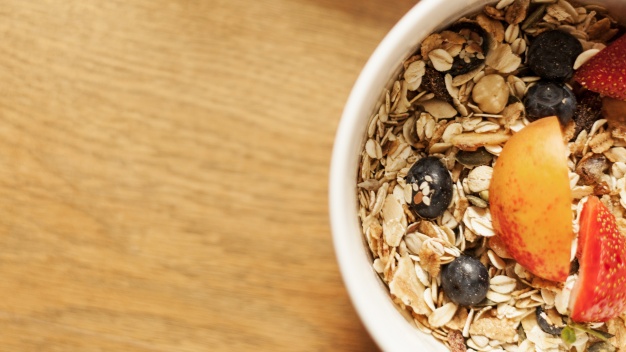
RECIPE IDEAS OATS PONGAL
Ingredients: Rolled oats or instant oats: 1 cup I Yellow moong dal: ½ cup cooked soft I Spinach (finely chopped) : 1 cup I Ginger (grated) : 1 tsp I Green chillies (slit): 2 I Salt to taste For tempering: Cumin seeds: ½ tsp I Black peppercorn (lightly crushed): 8 I Asafoetida: 14 tsp I Curry leaves: 6 I Ghee: 2 tsp Method: Heat the ghee, add all the ingredients used for tempering and then the ginger and green chillies. Add spinach and sauté for 2-3 minutes. Pour the water, bring to a boil, and then add salt and oats. Reduce the flame, cook for 4-8 minutes, depending on the oats. Add cooked dal and cook for another 2-3 minutes. Serve hot.
BIRCHER MUESLI
Ingredients: Rolled oats: 25 gm I Dried apricots (or any other dry fruit) : 1 tbsp I Almonds, walnuts or hazelnuts (roughly chopped): 6 I Apple juice: 6 tbsp, Green apple (coarsely grated): 1 I Milk: ½ cup I Spoonful of yogurt to top I Honey for garnish Method: Soak the oats and dried apricots in the apple juice overnight (that’s the key step). Put the apple in a bowl along with a pinch of salt. Add the soaked oats and then pour in the milk, to make its consistency like a porridge. Add the nuts and a dollop of yogurt. Drizzle the honey on it. Serve chilled.
How healthy is the food? (Click here to find out how healthy is your favorite foods )
It’s raining buckets. You theatrically sigh in pretend lament as your heart secretly does cartwheels no exercise today! For those of you who find it hard to reign in the urge to skip rained-out workouts, I’ve got bad news.I am going to suggest ways to lose weight, eat smart and exercise within the four walls of your home. Don’t hate me.It’s all for your own good.
Unless you have a home gym or a place of exercise that doesn’t involve some travel, there will be days where you genuinely won’t be able to make it. But I find that a lot of people use this season as a pretext to get off the health track entirely. Why gain when it rains? Look at it this way: a healthy monsoon means that when the party season rolls around, you are looking smoking hot. Instead of taking a rain check this season, take in the rain checklist instead…
FOR FOOD
You don’t have to plough slippery streets and negotiate overflowing gutters to get to a nutritionist. Online meal plans as well as online home delivery options abound. Nutritionists have also started online programmes so, after preliminary health checks and blood tests, the meal plan gets delivered straight to your inbox.
If you aren’t going to a nutritionist, do your research online and carefully choose diets that consist of about 25 per cent protein, 10 per cent (good) fats like MUFA, PUFA and Omega-3 and 65 per cent carbs (which includes fruits, vegetables, breads, pastas and the like). Needless to say, your carb intake needs to tip in favour of healthy fruits and vegetables. Check with your doctor that the diet ensures weightloss or maintenance (whatever your aim), and will not affect your general health. Also, don’t forget to monitor your oil and sugar content during the programme: depending on your lipid profile, 2-4 teaspoons of oil a day is all you need to ensure that your low-cal food has both fat and flavour. I’d also advise you to break up any diet you take into smaller meals and eat every two hours. The process of digestion burns calories and smaller meals help keep your body in the digestion mode for longer.
One of the most fun parts about going online though is tracking your progress -there are tons of weight tracker apps out there. But be honest to yourself.
FOR COMFORT FOOD
There’s something about the monsoon that heightens the senses and the food cravings with it. Avoid common comfort food traps. While bhujiyas and pakoras are standard monsoon comfort fare, other healthier options also work. Corn-on-the-cob or bhutta is a brilliant and incredibly healthy masala-filled option. Corn-in-a-cup also works. Boiled black chanas, piping hot idlis with yummy sambhar, masala rava idlis, hot masala chai (without tons of sugar), hot soups, boiled peanuts, kebabs, chicken tikka (with low oil), grilled vegetables, dosas, neer dosas, uttapams and upma -all have the ability to satisfy your craving for something fried in the rains.

FOR EXERCISE
If you can’t make it for a walk or the gym, you’d be surprised with the kind of workouts DVDs can give you. These may even go one step further, providing that missing bit of variation to your workouts, leading you to exercise mus cles that may not have been active in your regular workouts. Or just climb stairs or jump rope: both are amazingly simple ways to get your heart rate pumping just enough to lose weight.
So there you have it. The no-excuses guide to monsoon fitness. And a no-holds-barred solution to looking your best during the monsoon months.
Not much is known about vitamin B12. People usually aren’t aware of its vital role in keeping the human body together. B12, an integral part of the B complex group of vitamins, is responsible for many things that we take for granted it helps in the conversion of carbohydrates into glucose, pushes up our energy levels and keeps lethargy at bay. It is vital in regulating both the nervous and digestive systems, which implies that adequate quantities of this vitamin decrease stress, fight depression and keep the brain from shrinking.
B12 also helps shield you from heart disease by regulating your cholesterol levels and protecting you from high blood pressure and stroke. It is, in addition, crucial to the maintainence of your nails, skin and hair. It also keeps you looking young as it aids in skin cell renewal. Wait, it’s not over yet.
This vital vitamin has a role to play in your body’s metabolism and helps in producing the all-important red blood cells. And when it’s done with that, it moonlights as an anti-cancer superhero, fighting colon, breast, lung and prostate cancer. Phew! Like all things we take for granted, B12 is missed only when its levels drop. Many conditions affect the body’s ability to absorb this vitamin’, ranging from severe anaemia to the thinning of the stomach lining, to diseases that affect the small intestine (celiac disease and Crohn’s disease). Problems with the immune system like lupus or Grave’s disease and heavy drinking also interfere with the way B12 is absorbed by the body.
But all’s not lost. And even if it has, it can easily be regained. B12 is abundantly available in many foods like meats, eggs, milk, cheese, certain kinds of fish and liver. For those who don’t eat these, B12 supplements are widely available.
But all’s not lost. And even if it has, it can easily be regained. B12 is abundantly available in many foods like meats, eggs, milk, cheese, certain kinds of fish and liver. For those who don’t eat these, B12 supplements are widely available.
For those with severe B12 deficiency, intramuscular doses is a medically-approved way of compensating the lack of it. The best part about this vitamin though is that it is water-soluble, which means that after the necessary levels get absorbed by the body, the extra amounts are excreted naturally by your body.
But don’t self medicate. You need to check with your doctor before deciding how exactly to tackle a B12 deficiency. Sometimes it could be symptomatic of a larger problem.
If you are feeling chronically tired, get your B12 levels checked. The prescription may be as simple as eating more B12-rich foods or popping a pill.
Vitamins B12 is very important for good immunity, energy, stamina and to prevent hair-loss.
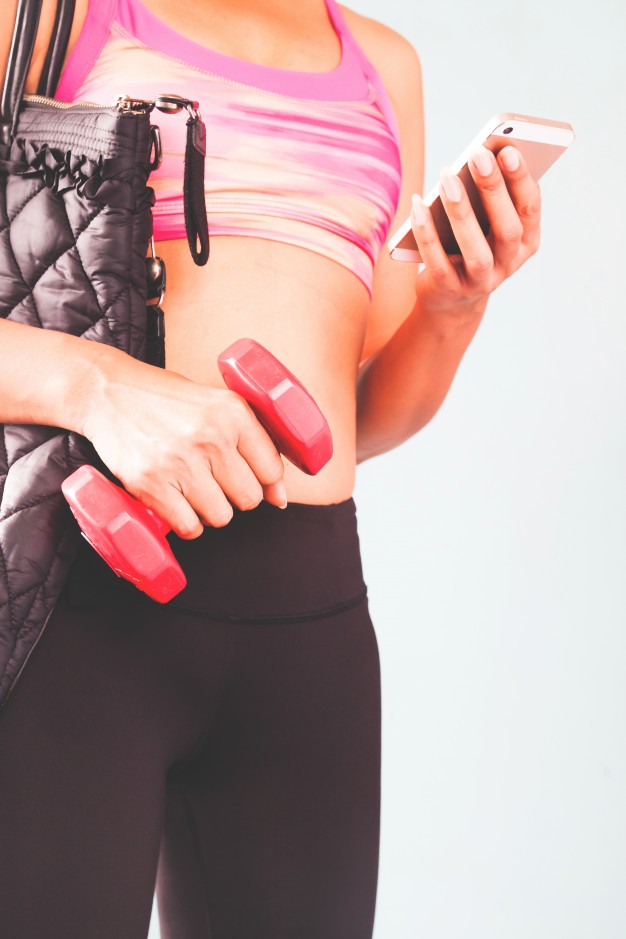
Today you can do everything from shopping to watching the latest movies to booking your next holiday without leaving the comforts of your couch. It’s no surprise that a large part of the health and fitness industry has also moved online, providing us with a range of convenient ways to lose weight. These include fitness trackers to track our daily steps; online food diaries, which monitor our daily calorie intake; exercise programs, which delivers a variety of weight loss videos; and online chat apps that allow us to connect with doctors over video consultations.
Needless to say, many of these tools do require us to move off that couch, but they also give us that much needed motivation to lose weight and make doing so a lot more fun! The FitBit fitness tracker, for example, is a wearable with blinking dots that keep increasing as we reach closer to completing the number of steps we’ve set as our daily goal—cross the finish line and the bracelet vibrates in approval. The Nike+ Running app, on the other hand, allows you to compete with people in your network and from around the world and even allows friends to support you by sending in-run cheers. Food diary MyFitnessPal can be customized to suit your specific dietary restrictions or nutritionist’s requirements, and online consultation apps allow you the comfort level of chatting with a doctor from home even when you’re travelling outside the country.
Nourish Genie, one of the new entrants in the online health and wellness arena, attempts to take all these components—community, motivation to lose weight, customization, and remote access to a nutritionist—and fit it into one streamlined package.
The brainchild of nutritionist Pooja Makhija, these online portal offers an easy onboarding process. First you subscribe by entering your details and choosing a plan suited to your health goals; options include weight gain and weight loss packages, pregnancy diet plans, lactation diets, plans for PCOS as well as plans for diabetes, weight maintenance, and muscle training. Next you upload your medical history, followed by your blood reports to your personal dashboard or to the Nourish Genie App, and…you’re done! The portal delivers customized diet menus and easy diet plans for the month to your inbox, and gives you access to an online food diary, as well as trackers to map your food and water intake, exercise, and food quota. Chat forums let you speak with others in the community, trade weight loss tricks, share which was the best diet for your weight loss, or even just vent if you’re feeling frustrated. And, of course, you can sign up for live video chats with Pooja Makhija and receive further motivation and guidance.
An MSc. in Food Science and Nutrition, Pooja Makhija is committed to providing her clients with easy diet plans and the best diet for their individual weight loss needs. Her weight loss packages and weight loss videos espouse a nutrition philosophy that embraces the nourishing aspects of food. Through Nourish Genie, Pooja aims to introduce this philosophy to clients world over.
Don’t feel like getting off that couch just yet? Don’t worry. Stay seated, log onto www.nourishgenie.com, check out the portal, and you may just find yourself naturally inspired to get moving!

